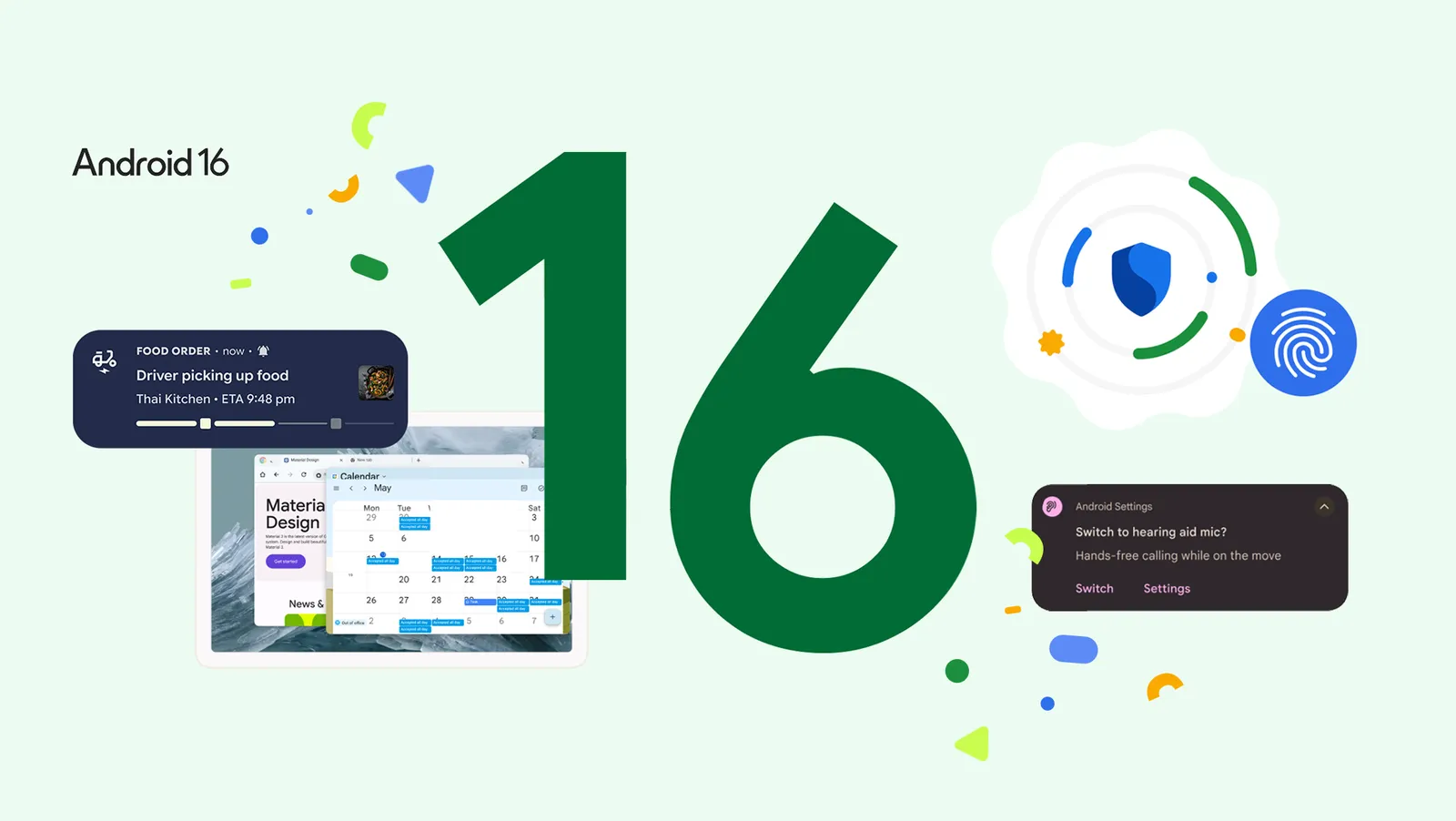Google has launched Android 16, its latest mobile operating system, starting with Pixel devices. This marks the earliest major Android release in recent years, with other phone brands set to receive the update later in 2025.
The new version introduces several key improvements that focus on streamlining notifications, enhancing accessibility, improving security, and boosting productivity features.
Smarter Notifications
Android 16 brings a significant change to how notifications appear on your phone. The system now automatically groups notifications from the same app, reducing clutter in your notification shade.
For apps like food delivery services, Android 16 adds live updates directly within notifications. This means you won’t need to open your delivery app repeatedly to check status – updates appear in real-time right in the notification. Google is working with ride-sharing and food delivery app developers to implement this feature, which will also integrate with Samsung’s Now Bar and OPPO/OnePlus’ Live Alerts.
Better Accessibility
For people who use hearing aids, Android 16 offers meaningful improvements. Users of LE Audio hearing devices can now switch between the hearing aid’s built-in microphones and the phone’s microphone during calls. This switch can dramatically improve call clarity in noisy environments.
The update also adds native controls for hearing devices, allowing users to adjust volume and other settings directly from their Android phone, providing a more consistent experience regardless of the hearing aid brand.
Enhanced Security
Security gets a boost with “Advanced Protection,” which Google describes as its “strongest mobile device protection.” Available with a single tap, this feature shields users from online attacks, harmful apps, unsafe websites, and scam calls. This protection suite is designed for both high-risk individuals and everyday users who prioritize security.
Desktop Experience
In a major productivity enhancement, Google collaborated with Samsung to develop “desktop windowing” for tablets and foldable devices. This feature allows users to open, move, and resize multiple app windows on a single screen, similar to a desktop computer experience. This builds upon existing single-app and split-screen modes, making multitasking significantly easier.
Later this year, Google plans to add custom keyboard shortcuts and taskbar overflow features. Future updates will also enable users to connect phones and tablets to external displays for an expanded desktop experience.
Other Notable Features
Android 16 includes several other improvements:
- HDR screenshots for capturing more vibrant and detailed images
- Adaptive refresh rate that adjusts based on content to balance smoothness and battery life
- Identity Check for biometric verification in unfamiliar environments
- Material 3 Expressive design language that makes the interface more dynamic
How to Install Android 16
Android 16 is currently available for Pixel 6 and newer models, including the Pixel Tablet and Fold. Eligible devices include:
- Pixel 6, 6 Pro, and 6a
- Pixel 7, 7 Pro, and 7a
- Pixel 8, 8 Pro, and 8a
- Pixel 9, 9 Pro, 9 Pro XL, 9 Pro Fold, and 9a
- Pixel Fold
- Pixel Tablet
To update, Pixel users should go to Settings > System > Software update and follow the prompts to install the latest version.
For those who want to try the beta version with even newer features, you can join the Android Beta Program by visiting google.com/android/beta and signing in with your Google account. After selecting your device and opting into the program, check for system updates on your phone. The beta update typically appears within an hour.
Currently, Android 16 QPR1 Beta 2 (released on June 10) is available through the Beta Program’s over-the-air update. This beta introduces additional Material 3 Expressive design changes to the lock screen, Quick Settings, and other system elements.
Android 16 represents Google’s commitment to earlier releases and continued refinement of the user experience across different device types. The focus on accessibility, security, and productivity shows how mobile operating systems are evolving to meet diverse user needs.







